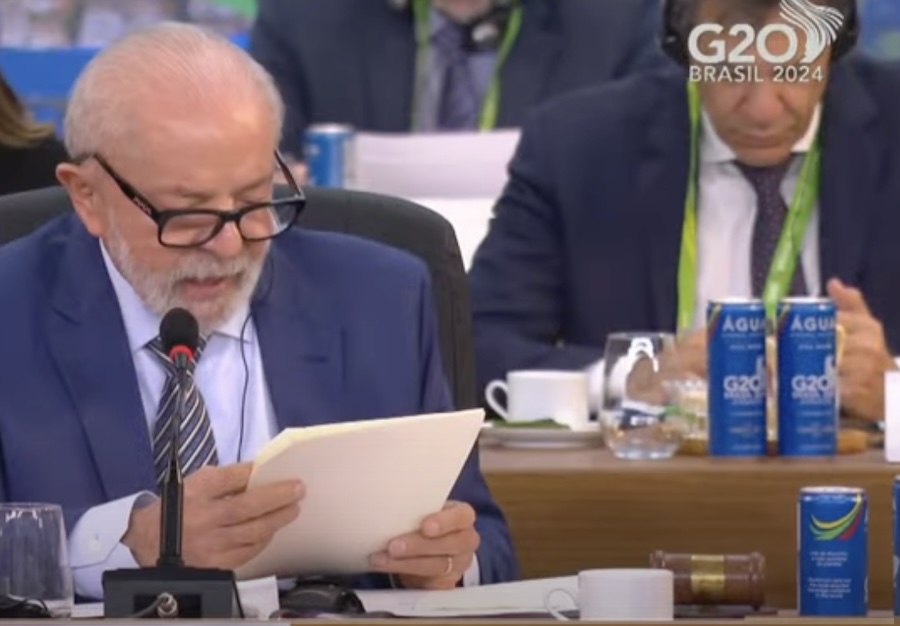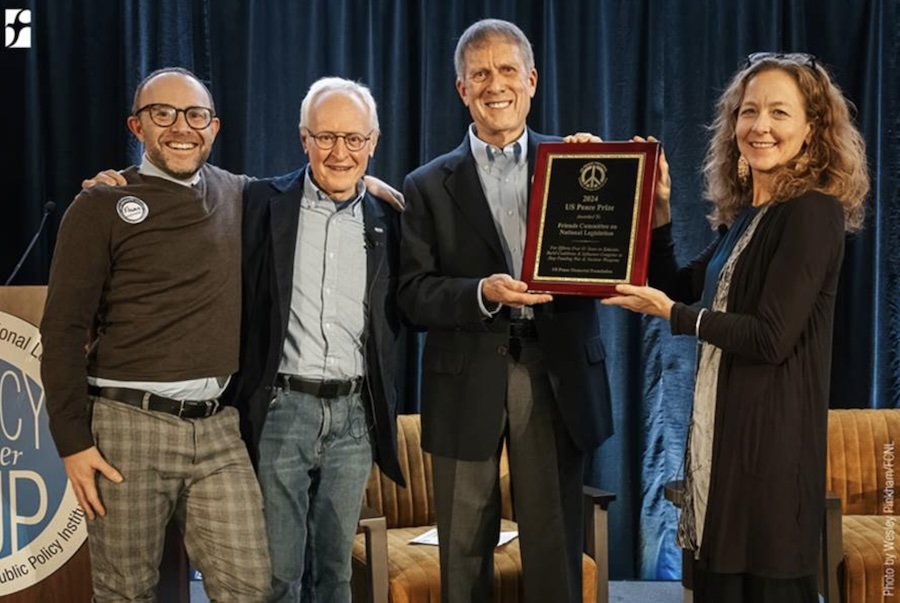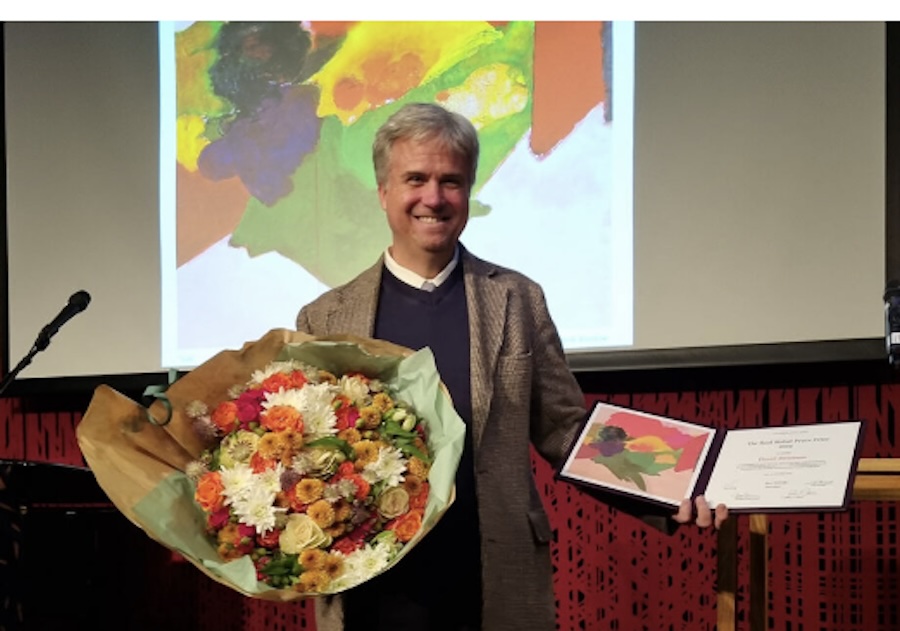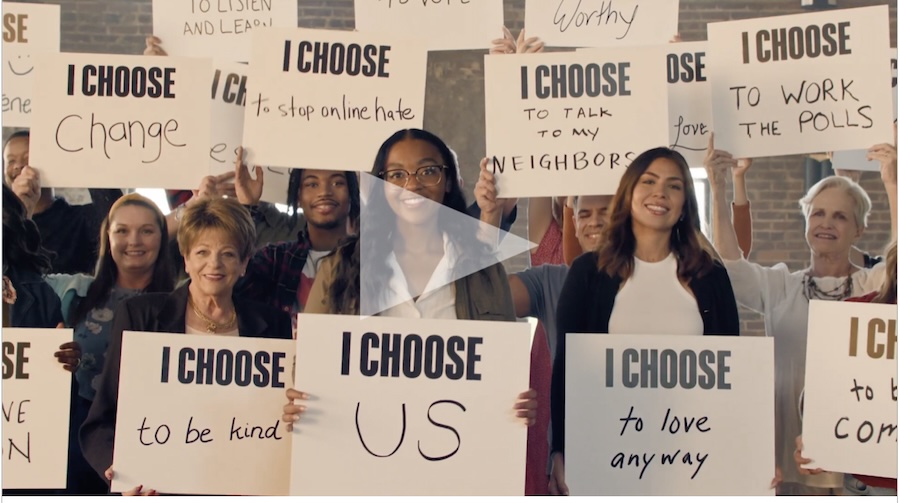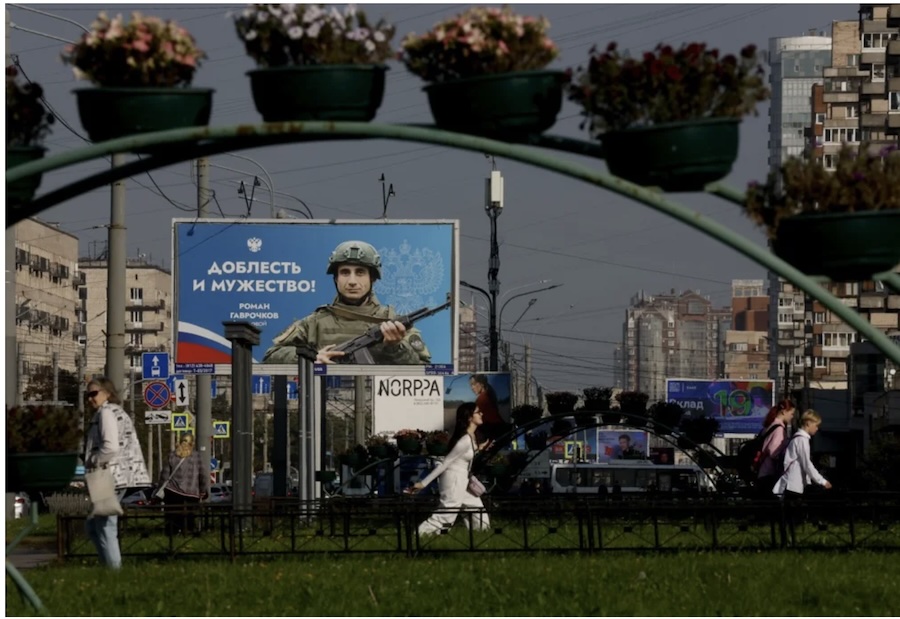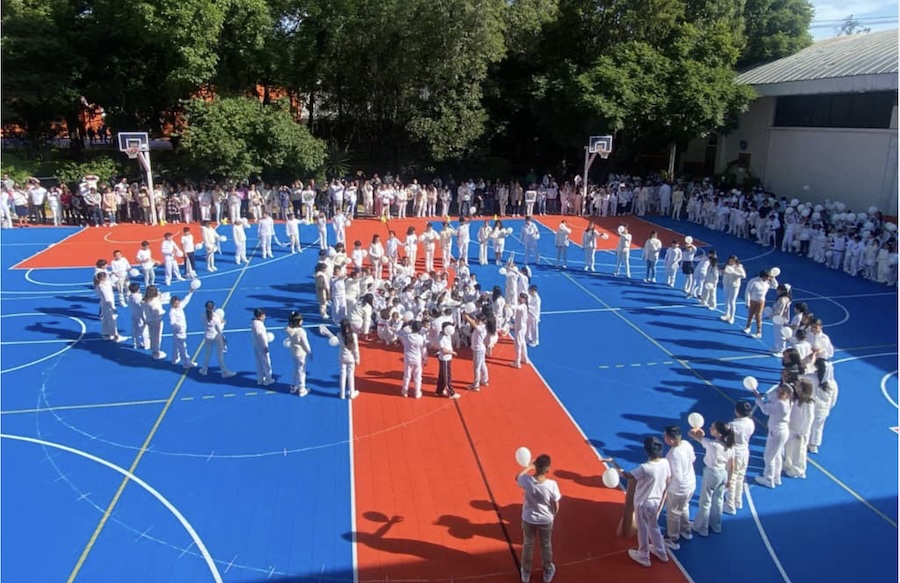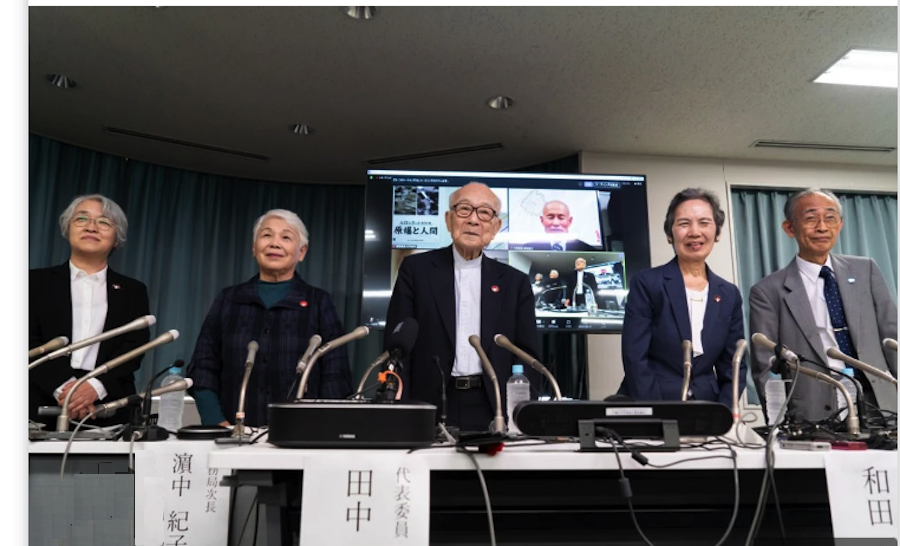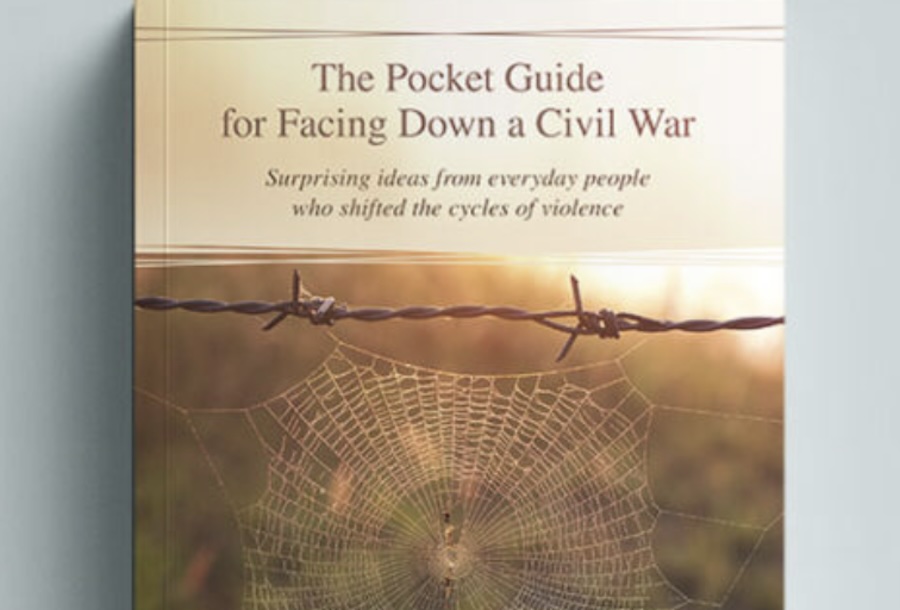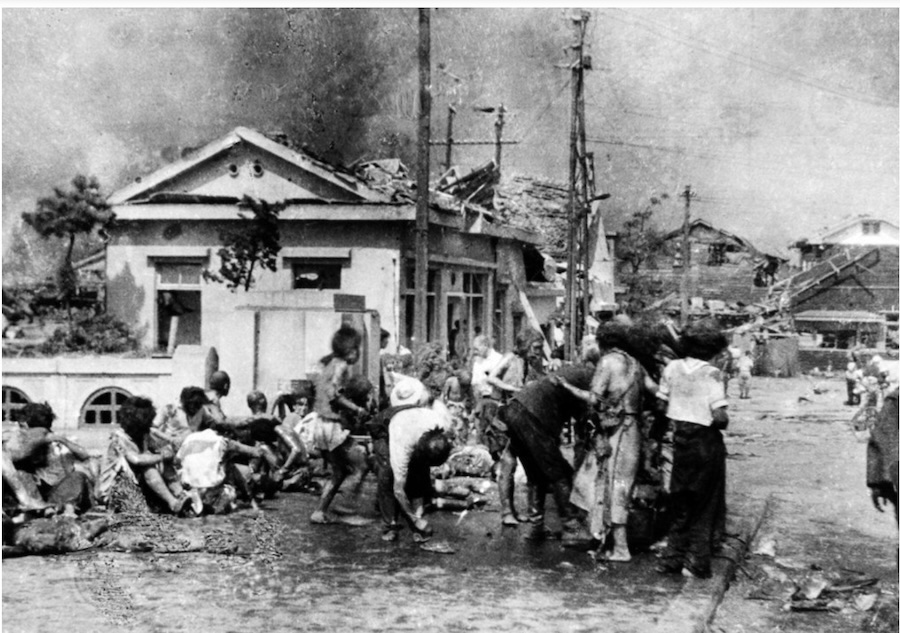DISARMAMENT & SECURITY .
Excerpts from presentation speech by Jørgen Watne Frydnes, Chair of the Norwegian Nobel Committee, 10 December 2024.
Nihon Hidankyo, a grassroots movement of atomic bomb survivors from Hiroshima and Nagasaki, is receiving the Nobel Peace Prize for 2024 for its efforts to achieve a world free of nuclear weapons and for demonstrating through witness testimony that nuclear weapons must never be used again. . . . Thirteen Nobel Peace Prizes have been awarded, in full or in part, for peace efforts of this kind. On each occasion, the Norwegian Nobel Committee has warned against the menace of nuclear weapons. This year, that warning is more urgent than ever before.
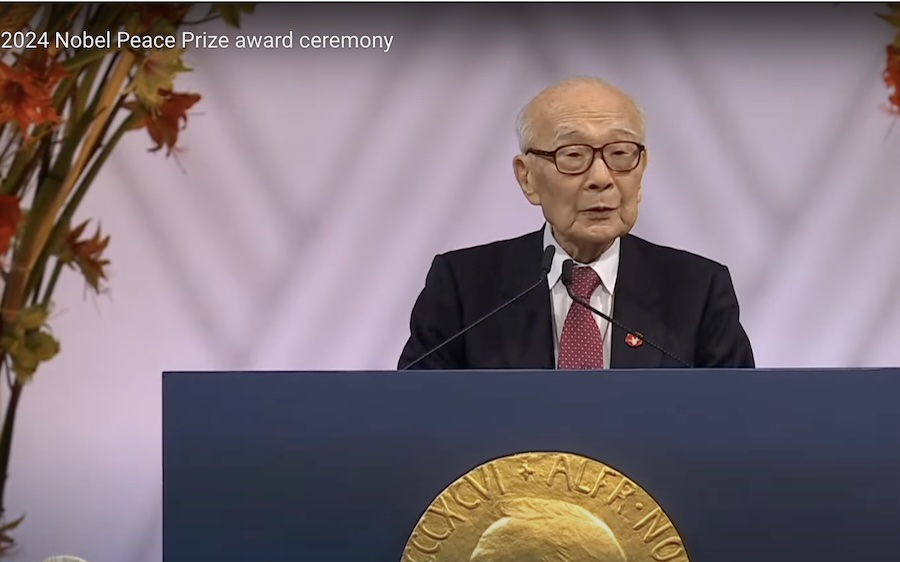
Frame from video of Tanaka’s speech
As 2025 approaches, the world is entering what many analysts characterise as a new, more unstable nuclear age. The role of nuclear weapons in international affairs is changing. The nuclear powers are modernising and upgrading their arsenals. New countries appear to be preparing to obtain nuclear weapons. Key arms control agreements are expiring without being replaced. And threats to use nuclear arms in ongoing warfare have been made openly and repeatedly. . . .
Nihon Hidankyo and the Hibakusha – the survivors of the atomic bomb attacks on Hiroshima and Nagasaki – have never wavered in their efforts to erect a worldwide moral and legal bulwark against the use of nuclear weapons. . .
To our dear guests from Nihon Hidankyo – to Terumi Tanaka, Toshiyuki Mimaki and Shigemitsu Tanaka – and to all the Hibakusha here today: It is an honour to be your hosts on this historic occasion, and we wish to express our deep gratitude for the outstanding and vital work you have performed in the course of your lives, and for all that you continue to do.
You did not resign yourselves to victimhood. You defined yourselves as survivors. You refused to sit in silent terror as the great powers led us through long periods of nuclear armament. You stood tall and shared your unique personal testimony with the entire world.
A light in the darkest night. A path forward. You give us hope. . . .
– – – –
Excerpts from the speech of Terumi Tanaka on behalf of Nihon Hidankyo
Thank you for your introduction. I am Terumi Tanaka, one of the three Co-Chairpersons of Nihon Hidankyo. I am honored to speak on behalf of Nihon Hidankyo, the Nobel Peace laureate this year.
We established Nihon Hidankyo, the Japan Confederation of A- and H-Bomb Sufferers Organizations, in August 1956. Having ourselves survived the inhumane impacts of the atomic bombings, damage unprecedented in history, we launched this movement to ensure such suffering would never be repeated, with two basic demands. The first demand is that the State which started and carried out the war should compensate victims for the damage caused by the atomic bombs, in opposition to the Japanese government’s assertion that, “the sacrifice of war should be endured equally by the whole nation.” The second is to demand the immediate abolition of nuclear weapons, as extremely inhumane weapons of mass killing, which must not be allowed to coexist with humanity. . . .
I am one of the survivors of the atomic bombing of Nagasaki. At the time, I was 13 years old, at home, around 3 kilometers east of ground zero.
It was August 9, 1945. I suddenly heard the buzzing sound of a bomber jet, and was soon after engulfed in a bright, white light. Surprised, I ran downstairs and got down on the floor, covering my eyes and ears with my hands. The next moment, an intense shock wave passed through our entire house. I have no memory of that moment, but when I came to my senses, I found myself under a large, glass sliding door. It was a miracle that none of the glass was broken, and I was somehow spared injuries.
Three days later, I sought out the families of my two aunts who lived in the area near the hypocenter. It was then that I saw the full devastation of the bombing of Nagasaki. Walking with my mother, we went around a small mountain. Reaching a pass, we looked down in horror. Blackened ruins spread out as far as the port of Nagasaki, some three kilometers away. . . .
(Continued in right column)
Can we abolish all nuclear weapons?
The Nobel Peace Prize: Does it go to the right people?
(Continued from left column)
By the end of that year, 1945, the death toll in the two cities is thought to have been approximately 140,000 in Hiroshima and 70,000 in Nagasaki. 400,000 people are estimated to have been exposed to the atomic bombs, suffering injuries and surviving exposure to radiation.
The survivors, the Hibakusha, were forced into silence by the occupying forces for seven years. Furthermore, they were also abandoned by the Japanese government. Thus, they spent more than a decade after the bombings in isolation, suffering from illness and hardship in their lives, while also enduring prejudice and discrimination.
The United States hydrogen bomb test at Bikini Atoll on March 1, 1954 resulted in the exposure of Japanese fishing boats to deadly radioactive fallout, or the “ashes of death.” Among others, all 23 crew members of the Daigo Fukuryu Maru were exposed to radiation and developed acute radiation sickness, and the tuna they caught were discarded. This incident triggered a nationwide petition calling for a total ban on atomic and hydrogen bombs and tests, which spread like wildfire throughout Japan. This gained over 30 million signatures and in August 1955, the first World Conference against Atomic and Hydrogen Bombs was held in Hiroshima, followed by the second in Nagasaki the following year. Encouraged by this movement, A-bomb survivors who participated in the World Conference formed the Japan Confederation of A- and H-bomb Sufferers Organizations, Nihon Hidankyo, on August 10, 1956 in Nagasaki.
In our founding declaration, Nihon Hidankyo expressed our determination to “save humanity from its crisis through the lessons learned from our experiences, while at the same time saving ourselves.” We launched a movement demanding both “the abolition of nuclear weapons, and State compensation for the atomic bomb damage suffered.”
Our initial campaign resulted in the enactment of the “A-Bomb Sufferers’ Medical Care Law” in 1957. However, the content of the law was limited: besides issuing “Atomic Bomb Survivor Certificates” and providing free medical examinations, medical expenses would be paid only for illnesses recognized as atomic bomb-related by the Minister of Health and Welfare. . . .
In April 2016, A-bomb survivors around the world launched the “International Signature Campaign in Support of the Appeal of the Hibakusha for the Elimination of Nuclear Weapons,” as proposed by Nihon Hidankyo. This campaign grew significantly, and over 13.7 million signatures were collected and submitted to the United Nations. We are overjoyed that on July 7, 2017, the Treaty on the Prohibition of Nuclear Weapons was adopted with the support of 122 countries.
It is the heartfelt desire of the Hibakusha that, rather than depending on the theory of nuclear deterrence, which assumes the possession and use of nuclear weapons, we must not allow the possession of a single nuclear weapon.
Please try to imagine — there are 4,000 nuclear warheads, ready to be launched immediately. This means that damage hundreds or thousands of times greater than that which happened in Hiroshima and Nagasaki could happen right away. Any one of you could become either a victim or a perpetrator, at any time. I therefore plead for everyone around the world to discuss together what we must do to eliminate nuclear weapons, and demand action from governments to achieve this goal.
The average age of the A-bomb survivors is now 85. Ten years from now, there may only be a handful of us able to give testimony as firsthand survivors. From now on, I hope that the next generation will find ways to build on our efforts and develop the movement even further. . . .
To achieve further universalization of the Treaty on the Prohibition of Nuclear Weapons and the formulation of an international convention which will abolish nuclear weapons, I urge everyone around the world to create opportunities in your own countries to listen to the testimonies of A-bomb survivors, and to feel, with deep sensitivity, the true inhumanity of nuclear weapons. Particularly, I hope that the belief that nuclear weapons cannot — and must not — coexist with humanity will take firm hold among citizens of the nuclear weapon states and their allies, and that this will become a force for change in the nuclear policies of their governments.
Let not humanity destroy itself with nuclear weapons!
Let us work together for a human society, in a world free of nuclear weapons and of wars!
– – – – – –
If you wish to make a comment on this article, you may write to coordinator@cpnn-world.org with the title “Comment on (name of article)” and we will put your comment on line. Because of the flood of spam, we have discontinued the direct application of comments.
